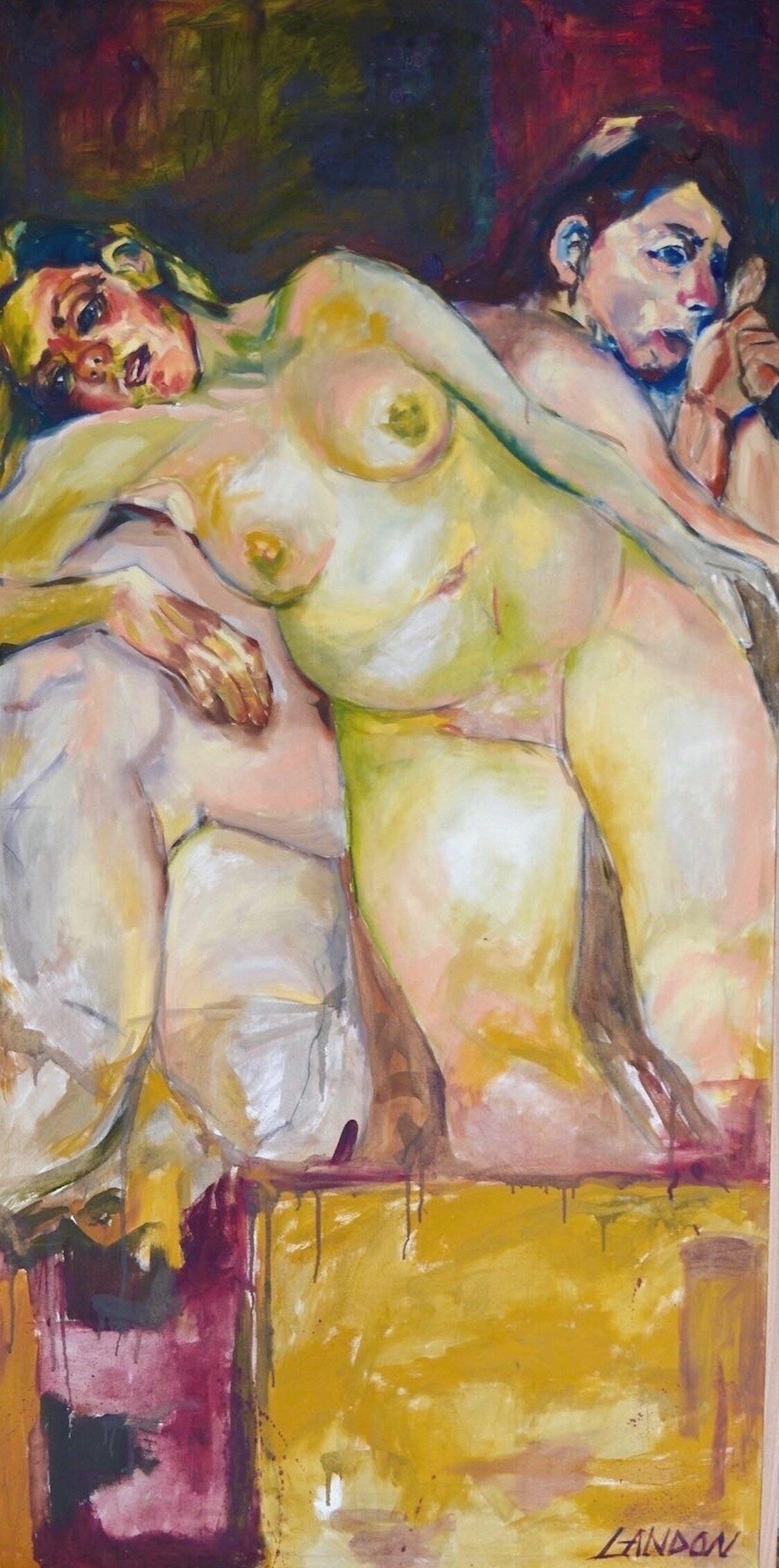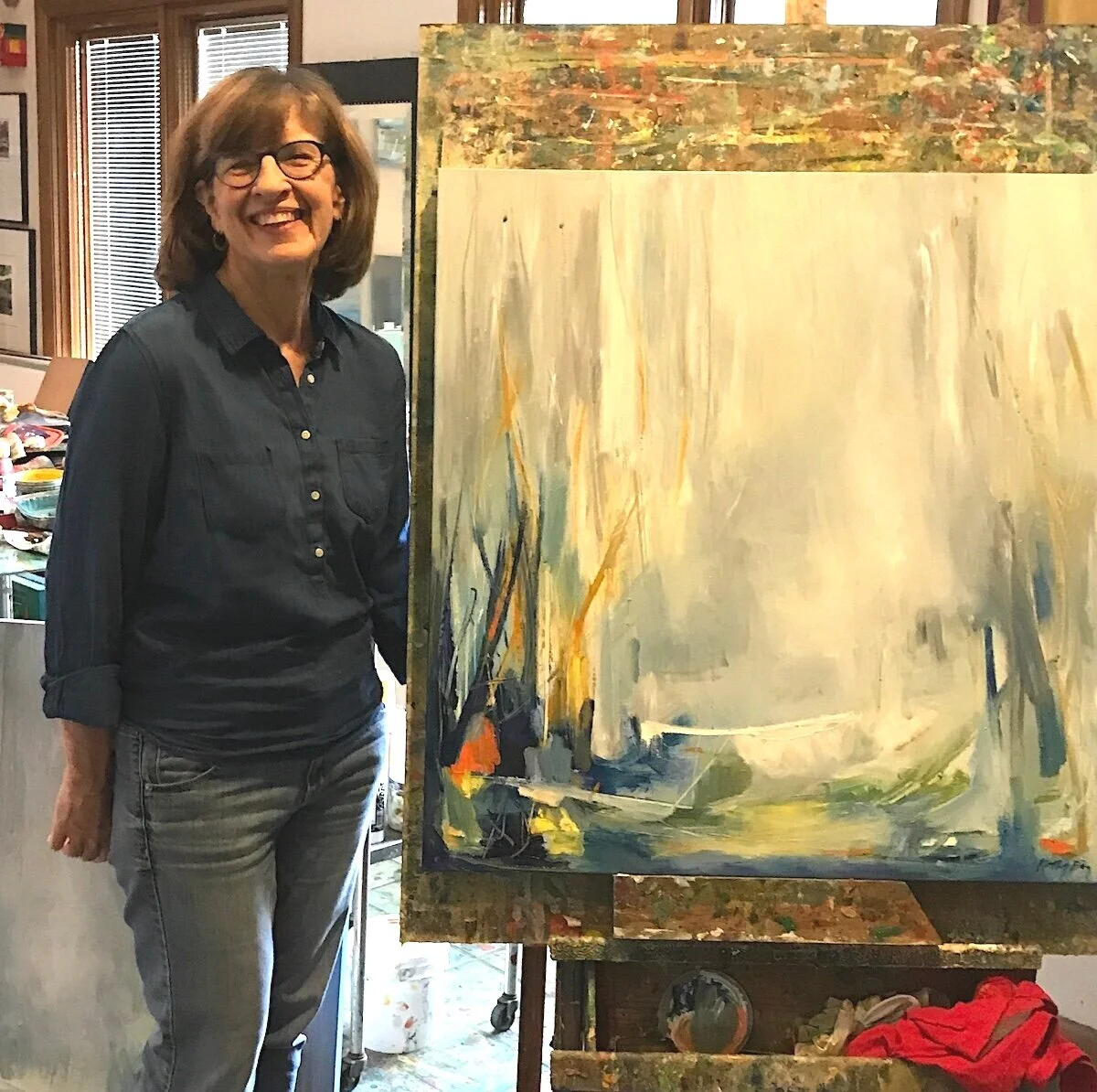Interview with artist Landon Bates
Landon Bates is a figurative artist from Harrisburg, Arkansas. He graduated from Arkansas State University with a Bachelor of Fine Arts degree in May. Although his studio degree had emphasis in printmaking, most recently Landon has focused on figure painting, taking inspiration from history, his collection of oddities, and the techniques of great painters he admires. His work can be found at Saatchi Art and at his Facebook and Instagram. Gallery owners, this young and very talented artist is looking for representation.
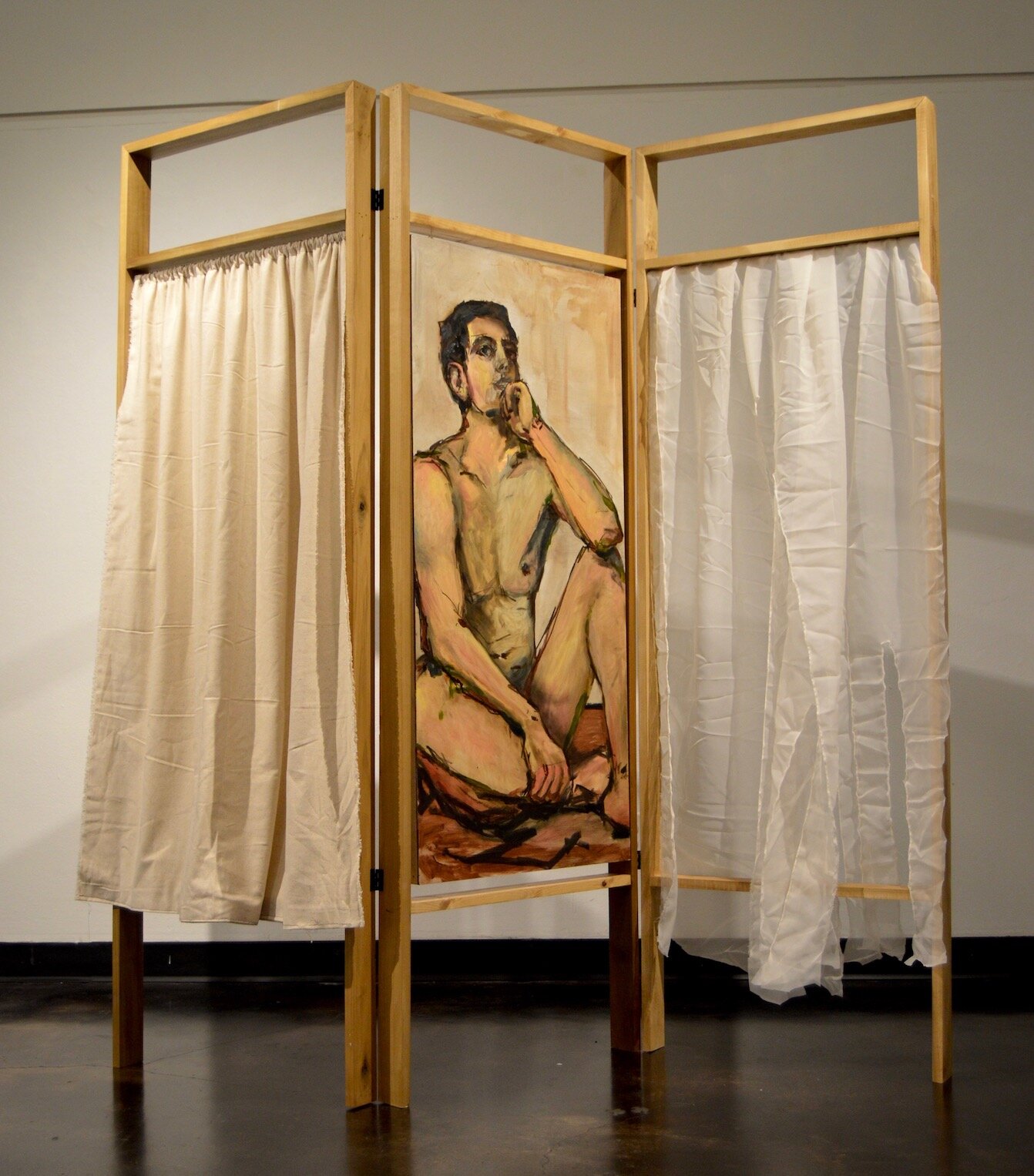
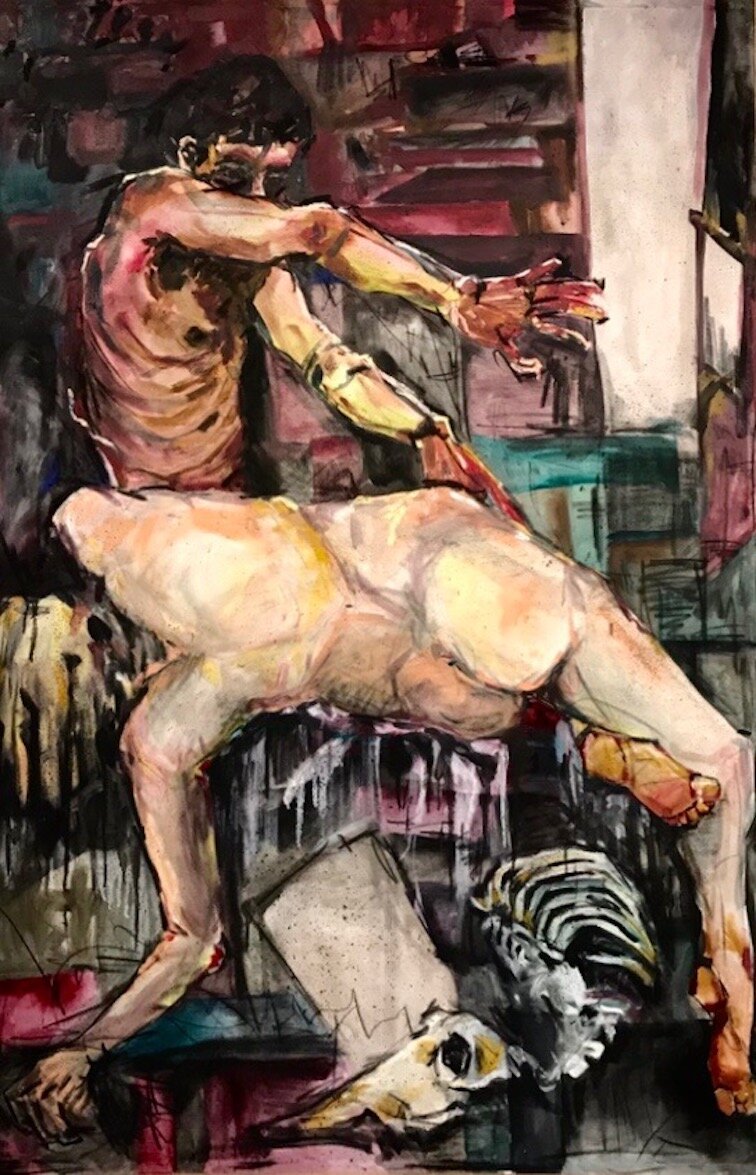
AAS: First of all, congratulations on earning your Bachelor of Fine Arts from Arkansas State University in May. What are your plans now?
LB: Thank you so much! I am glad to have earned my degree, but I already miss having an art community to surround myself with on a daily basis. I just accepted a job teaching art at Harrisburg Middle School, in my hometown. I feel like I’ve made a full circle graduating high school then going back into the same school, this time as a teacher.
AAS: Your senior exhibition was at the Bradbury Art Museum in Jonesboro and that must have been thrilling to see your work on museum walls, but at the same time disappointing because it needed to be a virtual exhibition. Would you talk about that experience and what it means to you to have your work experienced virtually rather than in person?
LB: Although it was slightly disappointing having a virtual exhibition, the staff at the Bradbury Art Museum did a phenomenal job making the best out of a bad situation. Having an exhibition is the pinnacle of the Studio degree, so when we were unable to have the full experience of an opening and oral defense, it at first was very discouraging to me and my other colleagues. However, having your artwork displayed in an art museum is such a highlight, even if just on a screen. We were so fortunate to have access to such a quality museum, right across campus.
“I am a collector of antiques and oddities, artwork, and history. I love having all of these things hanging around in my work space to serve as inspiration while I work.”
AAS: Do you come from an artistic family?
LB: I actually don’t come from an artistic family at all! I am definitely the odd one out when it comes to artistic ability. Being from a small town, which I love, there was not a lot of exposure to art, like my college experience gave me. I, of course, took art courses in high school, and enjoyed going to museums, but it wasn’t until college and having a foundations course with Cara Sullivan that I thought the art program would be for me.
AAS: Let’s talk now about your Saints and Martyrs series. It was the focus of your senior exhibition. Your iconography with the intensity of two artists you admire, Egon Schiele and Lucian Freud, is wonderful. The podcast, The Lonely Palette, did an episode on Schiele in 2018. You might want to listen to it if you have not already.
LB: I haven’t listened to that episode yet! I will have to check it out. Saints and Martyrs, actually was conceived very last minute for my senior exhibition. Before the series was started, I was convinced I was doing an entirely different series of figure paintings on stretched canvases. Closer to my exhibition, I made the first piece in the series, Saint Sebastian, for my upper level painting class and really liked the outcome. Freud and Schiele serve as two art giants in my opinion. I have looked to them both for guidance since my first year in college. It was an image made by Schiele that drove me into the direction of the Saints and Martyrs series. Throughout my time in undergrad, I made several paintings, drawings, and ceramics, but it was printmaking that took a lot of my time. I love works on paper and the way they are displayed. After painting Saint Sebastian, I knew my exhibition had to be framed oil on paper works to blend my love of painting, with the material of printmaking.
Saints and Martyrs series
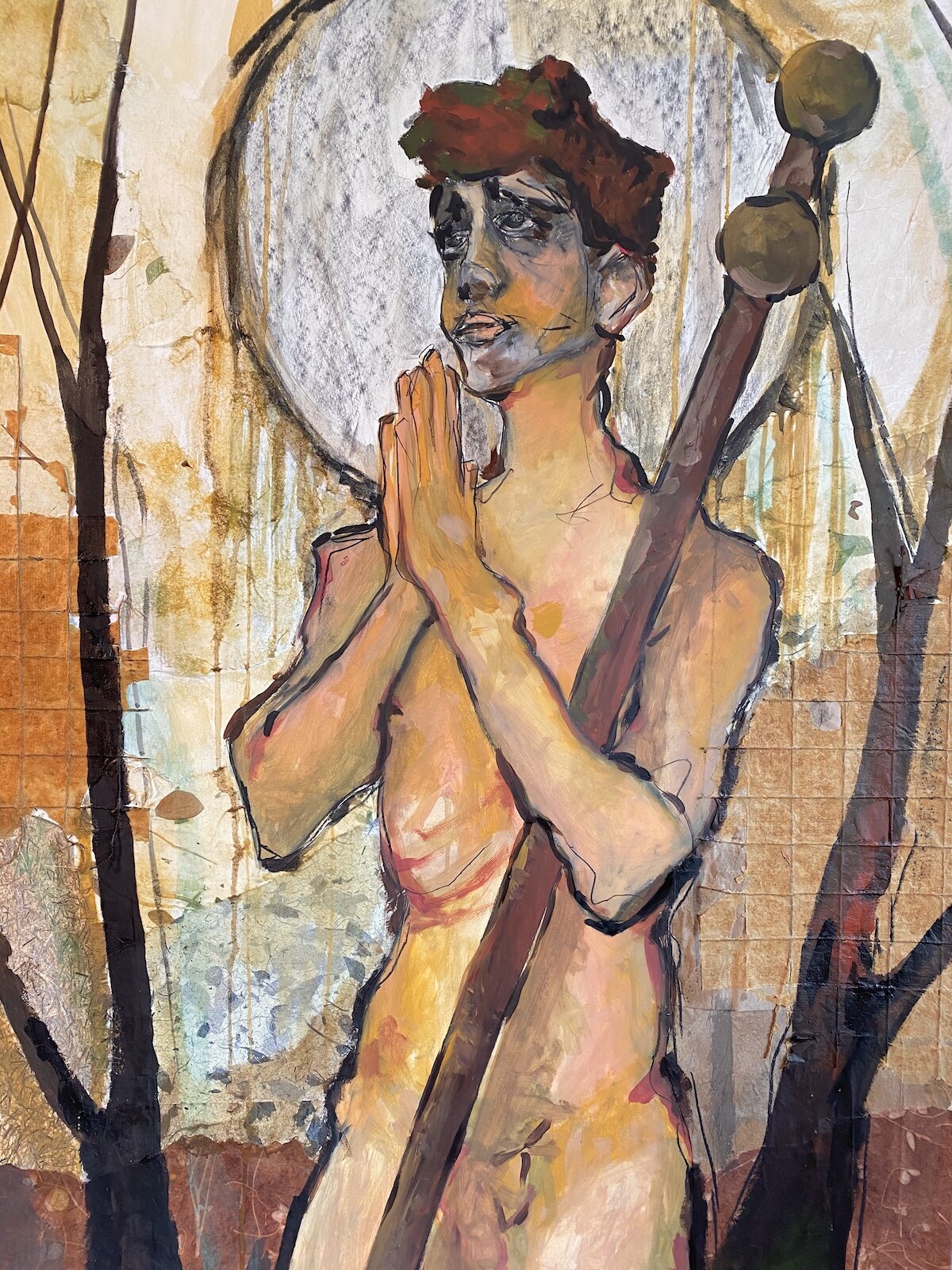
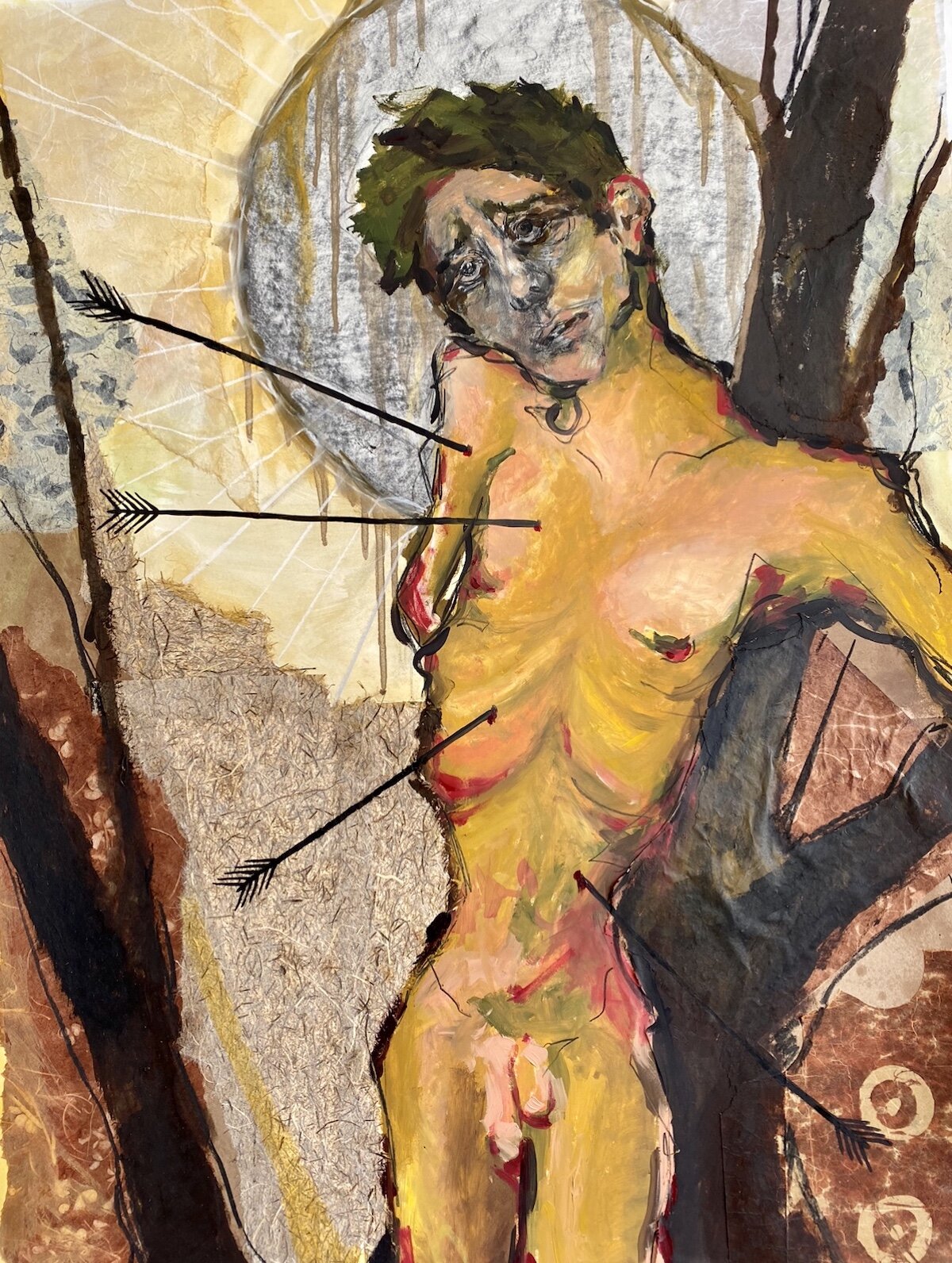
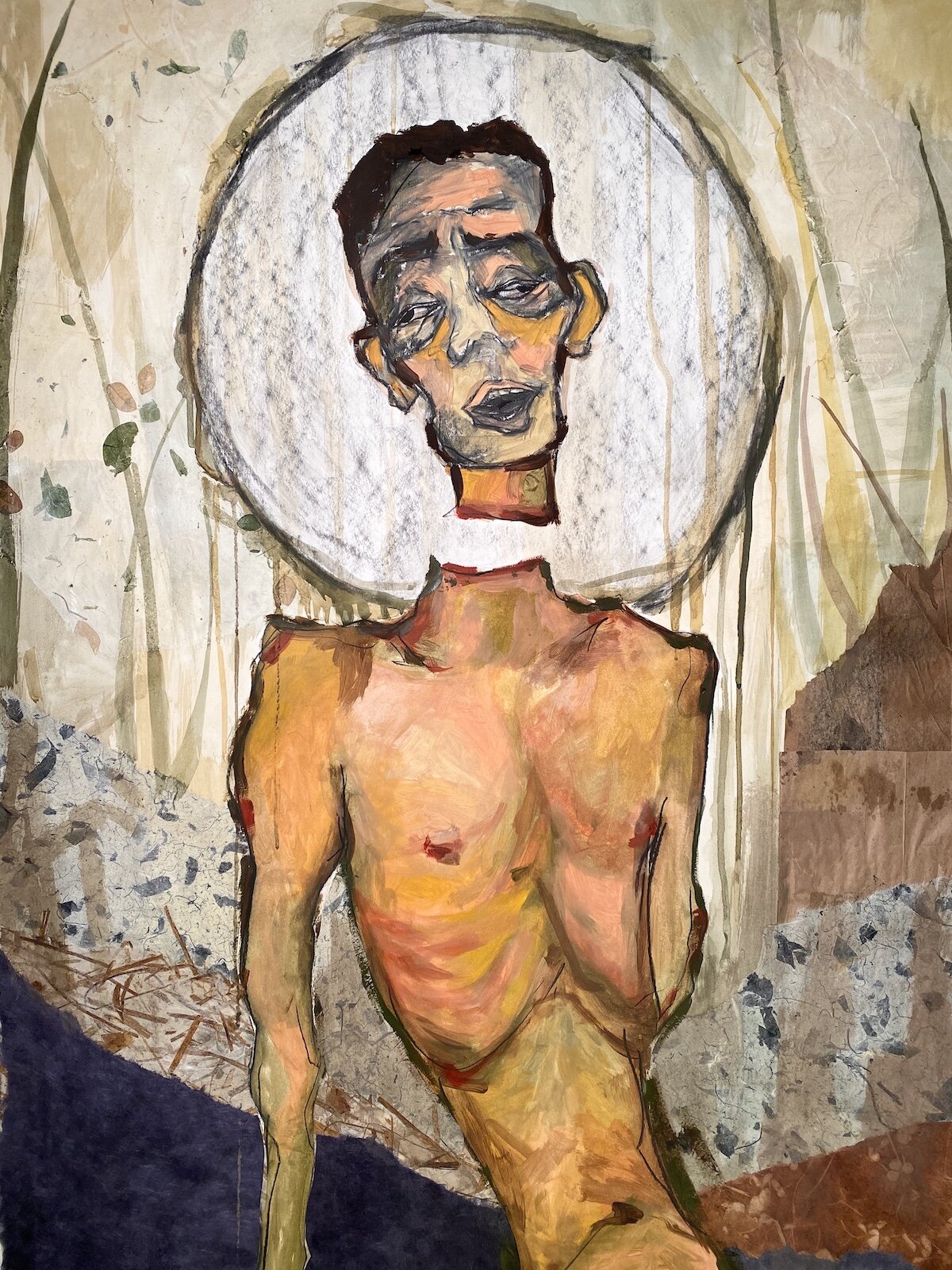

AAS: You mentioned printmaking and your degree was with an emphasis in printmaking. Talk about that creative process and do you have a favorite medium?
LB: Yes, my senior exhibition is a series of paintings, but my degree on paper, is a studio degree with an emphasis in printmaking. I took printmaking classes more than other classes, there are just so many different types of print and I love working in woodcuts and monoprints especially. In the printmaking studio, my instructor Shelley Gipson, had an archive of prints over the last several years of past students, and prints obtained through exchanges at conferences etc. This archive served as a huge inspiration to me when I thought about making prints for her class. It is so nice have a tangible artwork to look at and feel, so you can make decisions for your own print.
AAS: I have to say I really love your Americans Retold portrait series. They are in a quite different style from much of your current work. Do you have plans to add to that series?
LB: Every once in a while, I find an artist I really admire. Anne Siems is a Seattle based artist who paints portraits, similar to early American works, with an interesting spin on it. I have always liked early American portraits, and these paintings were an attempt to modernize them. I pulled source imagery from early paintings and modern paintings to create the mash up. I originally made the paintings in a pair, but I have thought about creating more to add to them.
Americans Retold 1, oil on wood, 20” x 16”
Americans Retold 2, oil on wood, 20” x 16”
Sarazhin Study, oil on board, 24” x 24”
AAS: Your [Denis] Sarazhin Study is marvelous and great fun. His paintings are very anatomical and his figures have almost translucent skin. You seem to be taking that direction in many ways.
LB: Denis Sarazhin is my most favorite contemporary artist. He handles flesh unlike any other artist I have come across. Similar to Saville, Sarazhin creates a very tactile flesh, full of color. This is a way I had never worked before. I am used to working very quickly, with somewhat muted color. I will not spend a lot of time making the most perfect skin tone. I lay on the paint and leave. I have always loved working in this way, and you can get a lot done in a short period of time. Sarazhin cannot work this way and achieve the level of detail he has, which I came to realize when I started this study. I made this painting in a time where I was unsure what direction I wanted to go in as an artist. I decided to do a study based on Sarazhin’s painting, Pantomime 9, to help me reevaluate what I wanted to paint. The act of making Sarazhin Study, was a very slow process. I was forced to take my time and scrutinize every brushstroke. This study has been most helpful to me when thinking towards new paintings.
James of Arcadia, oil on canvas, 48” x 72”
AAS: Who are some of the other more contemporary artists you admire?
LB: Jenny Saville has always held a big part in my heart. She was a huge inspiration to me all through my undergrad. Cecily Brown is another artist who makes my top 5. She works on a massive scale and uses paint in a way that is very intriguing. Her works are full of texture, color and imagery. Brown may work on a piece for years painting and painting over to create infinite layers. Elly Smallwood, a Canadian artist, has also been an inspiration to me. She was the first artist I met that got me interested in the figure. I was so lucky enough to meet her in person when her flight got cancelled and she was forced to stay another day in Amsterdam. We met up for coffee and I got to question her about her life and how she makes it as a full time artist. And lastly, of course as I mentioned, Denis Sarazhin, who I constantly find inspiration in.
AAS: Where do you see yourself in 5 years and 10 years?
LB: When I was in high school, and college, I wanted to move to the east coast or Europe. Since graduating Arkansas State and going back to my hometown and getting a job here, I can truly say I love my hometown and have no plans of moving in the near future. I travel a lot. I love to go to Europe, and those trips will still happen of course, but I can see myself living here for quite a while. I would love to give private lessons in charcoal drawing and painting in my home studio, and hopefully that will come within the next few years.
Collaged Figure Number 2, mixed media on Stonehenge paper, 48” x 36”
AAS: Certainly not all career artists have art degrees. What do you think a degree in Fine Arts has contributed to your future?
LB: For me, my art degree didn’t serve as a ‘must have’ to get a job as a working artist. I didn’t get an art education degree; I got a studio degree. Artists everywhere have no degree. There are practical perks of getting an art degree like learning to write about your work, and learning the ins and outs of the art world, but beyond these lessons, my degree served as a way for me to learn new techniques, meet some really amazing people, and work in a community of other artists, which I had never experienced before.
Landon in his home studio.
AAS: Finding time to paint while teaching can be challenging. Do you consider yourself a disciplined artist? What is your studio like?
LB: Finding the time to make artwork is extremely challenging when you are given a task like teaching. I already have found it difficult to have studio time, and I have just been in professional development training sessions. It will be interesting to see how I find a way to work in painting hours when my plate is full teaching school, and lessons. My studio is in my home. It is filled to the brim with everything I love and find interesting. I am a collector of antiques and oddities, artwork, and history. I love having all of these things hanging around in my work space to serve as inspiration while I work.
AAS: I wish you all the best, Landon, thanks.

